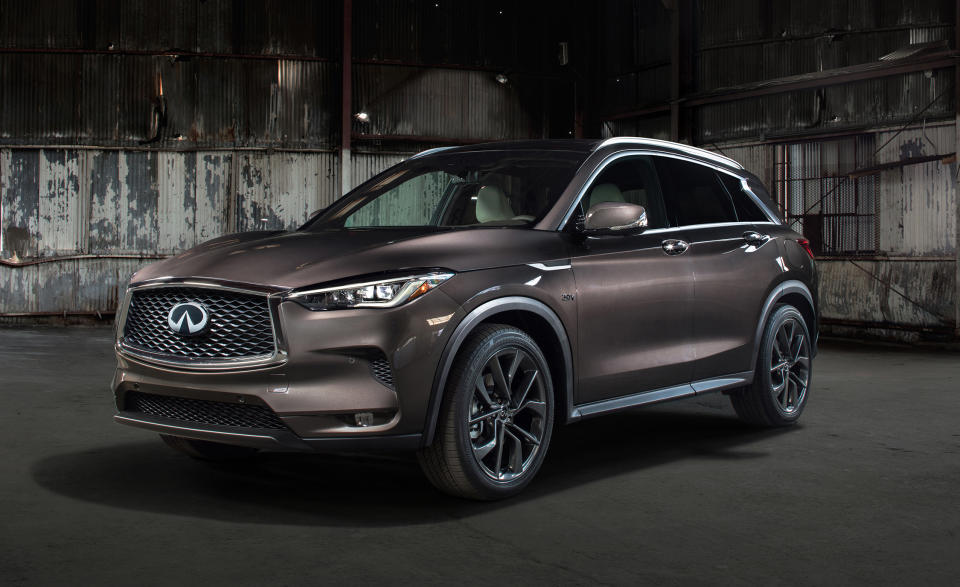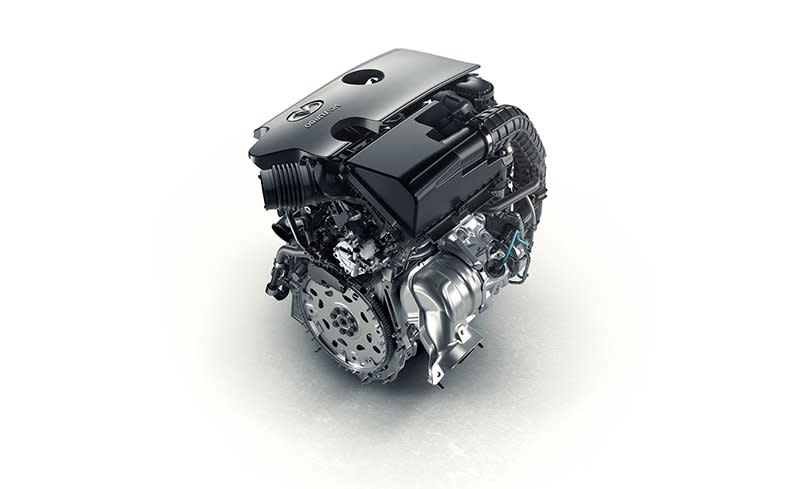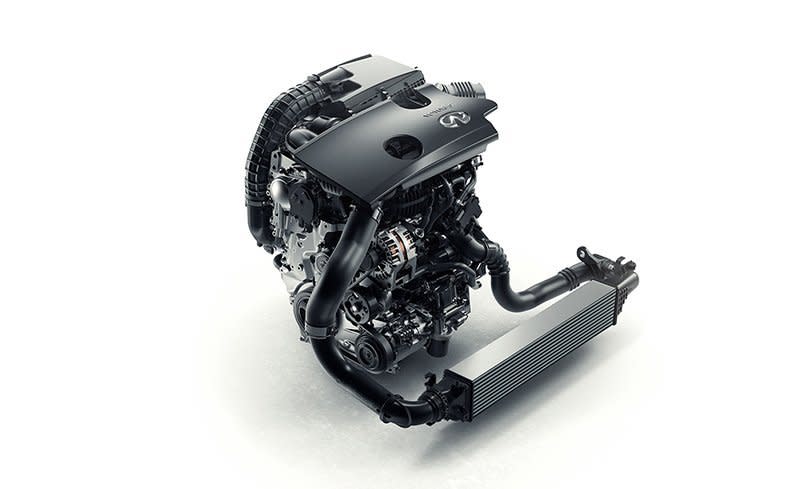2019 Infiniti QX50: Crossover Proportions, Radical Propulsion

After two decades of development, amassing some 200 patents along the way, Infiniti is the first automaker to move the vaunted concept of a variable-compression-ratio engine out of the engineering labs and into production. The first of many Infiniti vehicles that this 2.0-liter VC-Turbo engine will power is the all-new 2019 QX50 compact crossover.
Getting to the second generation of what started as the EX35 for the 2008 model year and then was renamed QX50 for 2014 has taken an inordinately long time compared with typical automotive life cycles, and the aging model has been a slow seller, even as the crossover market has gained momentum. The QX50 switches from a front-engine, rear-drive platform that looked a little too hatchback-like—no doubt its kiss of death sales-wise—to a new, all-steel, transverse front-engine, front-drive platform that’s substantially taller (by 4.2 inches) and wider (by 3.9 inches). Despite this growth, Infiniti says that the drag coefficient has been substantially reduced on the new model.

Dimensionally, the new QX50 now falls right in line with the throng of compact luxury crossovers, although, interestingly, the wheelbase of the new don’t-call-it-a-hatchback is the same 110.2 inches as that of the original EX35 (when it became the QX50 in 2014, the wheelbase grew to 113.4 inches). However, the packaging efficiencies gained from the switch to a transverse front-drive architecture plus the additional height and width should equate to fully competitive rear-seat space this time around, although Infiniti has yet to release interior dimensions. Cargo volume for the new model is 37 cubic feet with the second-row seats slid to their front-most position and 60 cubic feet with the seatbacks folded, which puts it at the large end of the class.
Although we’re enthralled with the new VC-Turbo inline-four engine, we won’t rehash all the details again here. If you haven’t yet read up on the engine tech, check out our comprehensive overview from when the engine debuted at the Paris auto show last year and our report from briefly driving a prototype QX50 earlier this month. The quick summary is that a system of links and levers allows this port- and direct-injected engine to vary the stroke length of its four pistons by 1.2 millimeters to alter the compression ratio from 8.0:1 to 14.0:1. When it’s making close to its peak output of 268 horsepower and 280 lb-ft of torque and, say, sprinting to a claimed 6.3-second zero-to-60-mph time (that’s for the quicker, all-wheel-drive model), it will be running a lower compression ratio and higher turbo boost. But when peak power isn’t needed, it can ratchet up its compression ratio and, correspondingly, its efficiency. Infiniti predicts an EPA combined fuel-economy rating of 26 mpg for all-wheel-drive models and 27 mpg for front-drivers, with the only transmission being a continuously variable automatic (CVT). While those ratings are at the top of the segment, they’re not a huge leap from the 25-mpg rating of an all-wheel-drive Audi Q5 or BMW X3, and it can’t match the Jaguar F-Pace diesel’s 29-mpg figure. As soon as we can get one to test, we’ll give you a full report of how its real-world fuel economy stacks up.

The new QX50 also adds ProPilot Assist, Infiniti’s driver-assist system that uses a forward-facing camera and radar to read and react to surrounding traffic and lane markings. Infiniti says this feature is intended for highway driving, where it combines control of acceleration, braking, and steering to maintain the gap to traffic ahead while keeping the QX50 centered in its lane.
Although competition among compact luxury crossovers has never been fiercer—and the new QX50 will be up against everything from stalwarts such as the Lexus RX, the Audi Q5, and the BMW X3 to newcomers including the Jaguar F-Pace and the Alfa Romeo Stelvio—it appears that Infiniti has done the right things to give its entry a better shot at success this time around.

 Yahoo Autos
Yahoo Autos 